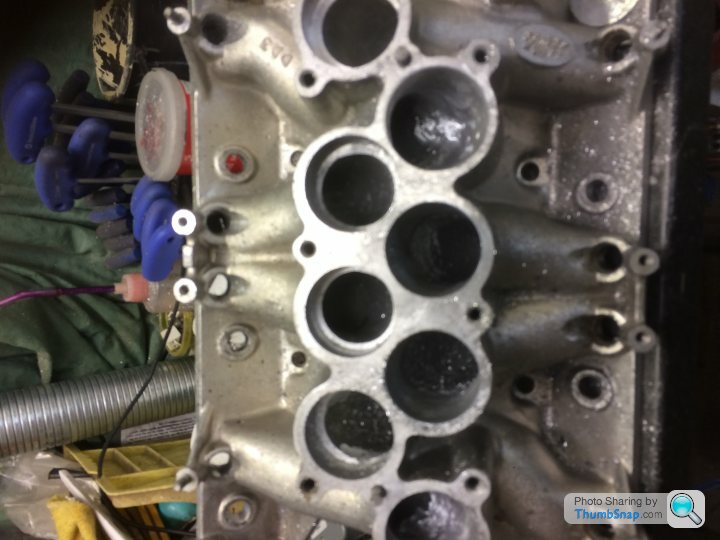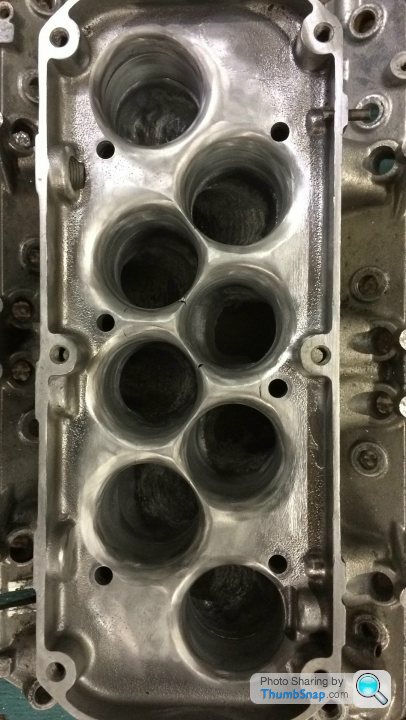Top tips inlet porting / flowing
Discussion
The idiot's guide to porting ->
Stage 1 = get rid of all sharp edges. (can also match ports to head, it helps.)
Stage 2 = get rid of all bumps/narrow bits.
Stage 3 = make everything wider & taller, including the valves.
Yeah, I know, but this is the principle of it.
Along with -
It's EASY to supply more fuel, what's hard is to get the air in and out to match it.
Stage 1 = get rid of all sharp edges. (can also match ports to head, it helps.)
Stage 2 = get rid of all bumps/narrow bits.
Stage 3 = make everything wider & taller, including the valves.
Yeah, I know, but this is the principle of it.
Along with -
It's EASY to supply more fuel, what's hard is to get the air in and out to match it.
jojackson4 said:
Is a 500 which will have a blended bace when I have done
Peter
What's a 500? The existing engine or the manifold you have purchased? The manifold on a 500 is already ported to an extent - the inlet runners on the top are 44mm to match the OEM "scaffold tube" trumpets.Peter
Bigger doesn't always mean better, holes that are too big or the wrong shape will ruin the gas-flow /fuel mixing the engine wants. Beyond removing the casting flashes and port alignment to the head (and if the head holes are bigger than manifold ports this may be not a good thing to do) . Get an expert who has experience and results in what you want from the change, and/or have a spare part/engine on hand for when its worse afterwards. Note seat of the pants testing rarely shows any benefits, e.g. holes created in low range torque often feel like rises in power high up as the engine climbs out of the hole created, and if the fuelling ignition etc isnt set to take advantage then your just finding a way to pass time and create metal particles.
Gassing Station | TVR Major Mods | Top of Page | What's New | My Stuff






